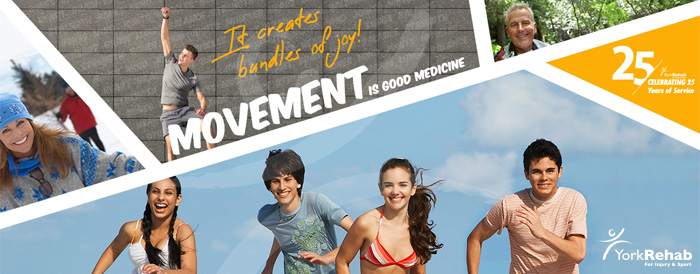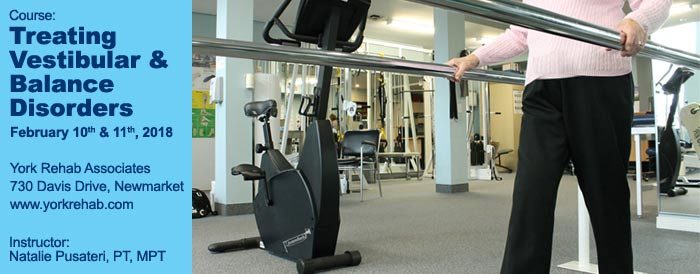Balance
Movement is Good Medicine
Note: if you are not used to regular exercise, before beginning any new workout routine, it is important to CONSULT WITH A DOCTOR OR HEALTHCARE PROFESSIONAL.
Moving is the best thing you can do for your mind, body and soul. It provides a level of healing, sustenance and wellness that few things can compete with. We encourage our patients to move not just as a path to recovery but to employ it as a sustainable way for developing/maintaining strength and for general mental wellness. This is not new information for our readers, but the general practice by most does not include integrating movement into our lives daily in a meaningful way. We know moving is good for us, so why do so many of us neglect to move?
We Take Movement for Granted
We miss it most when it’s gone. We tend to only remember that movement is a privilege when we get injured. We are reminded of the luxury of being able to walk when we sprain an ankle, injure a knee or pull a hamstring. Or how important fingers are, only after we sprain one of them. Or how dependent we are on our back when strain or exertion from the day before makes it hard to sit up to get out of bed. There are countless instances where we are reminded of how important our bodies are not just to compete in sport but for everyday living.
What’s at Stake?
One thing is certain, the less we move now, over time than can translate into a decrease in our ability to move comfortably for everyday living. Everyday things like getting up from a chair, bending to pick up a box, putting on your socks, walking up steps, going down onto the floor. Whether you decide to move more or move less the effects will compound over time. Just like compounding interest, a little can grow into a lot. Investing in daily movement now will compound over time into building strength, heart health, improved mental wellness, lowering stress, minimizing joint pain, weight management, improved sleep, better balance and more brainpower. The reverse also holds, less movement will create the reverse effects with the same benefits just shared. And the effects can sneak up on you unexpectedly – coughing too hard throws out your back, you pull a hamstring running to catch a bus, etc.
So How Can We Move More?
If you’re interested in adding more movement into your day, be deliberate and create a plan. Start with figuring out what your goal is:
- Strengthening and muscle building
- Weight-loss
- Mental Wellness
- Improved Health
- Recovering from injury
- Improving or sustaining general health
Once you’ve identified your goal(s), it’s time to design a plan. Planning includes what type of activity you are going to do when you are going to do it, and whether you need some support (a friend or a trainer). The type of activity you decided on should be in alignment with your goal. For example, if you’re interested in sustaining your fitness level, 30 mins of daily activity can do the trick. But, if you are interested in strengthening or losing weight, you’ll need a larger time commitment (approx. 60 – 90 mins), at least 3 times a week.
To Build a Habit of Movement…Start Simple
If incorporating more movement/activity into your day, is a new thing for you start with simple steps. For example, don’t set a goal of running in a marathon in 3 months and schedule 30-minute runs 5 days a week. Instead, begin with basic movement like a 25-minute brisk walk every other day and build from there. If you prefer to walk inside you can check out Walk at Home by Leslie Sansone on Youtube. If building strength is the goal, it won’t be safe to start with 60-minute workouts lifting heavy weights. Begin with a 10 to 15-minute workout relying solely on body-weight – you can YouTube “HIIT workout”, “Calisthenics”, or “Full body workout, no equipment” for ideas and motivation (there are many videos to chose from).
Tips to Help You Succeed
- Each day that you complete your activity, note it on your calendar. You’ll be able to turn to it for motivation once you start to see the checkmarks adding up.
- Dress for success. The right attire can make you feel good and encourage you to stay active.
- Be comfortable with uncomfortable. As you transition into new activity and challenge your body, it may not always be enjoyable – no problem, understand that’s normal and embrace a bit of discomfort. (Note: if you feel pain, stop the movement and consult a healthcare provider).
- Schedule your activity. Give yourself a specific time of day that you plan to move and commit to it.
- Remember the why. Write down your goal and the reasons why so that you can refer to your notes from time to time for added motivation and encouragement.
Good Luck as You Work to Move More
Remember movement is good medicine. So, use it so you don’t lose it.
Disclaimer: Understand that when performing any exercise or exercise program, there is the possibility of physical injury. If you engage in any activity or exercise that’s referenced on the yorkrehab.com website, you agree that you do so at your own risk, are voluntarily participating in any such activity, assume all risk of injury to yourself, and agree to release and discharge York Rehab from any and all claims or causes of action, known or unknown, arising out of any content provided or referred to. The information provided on yorkrehab.com is not intended to be a substitute for medical guidance, diagnosis or treatment. You should not delay pursuing medical advice because of something you have read on this website. York Rehab (yorkrehab.com) is not responsible or liable for any advice, course of treatment, diagnosis or any other information, that appears throughout yorkrehab.com. If questions arise from any content that appears or is referred to on yorkrehab.com you are encouraged to consult a medical professional such as your doctor.
Treating Vestibular & Balance Disorders (Course: Feb 10-11)
Treating Vestibular & Balance Disorders (2-Day Course)
Dates: February 10th and 11th, 2018
Location: York Rehab Associates, 730 Davis Drive, Newmarket, ON. L3Y 2R4
Course Purpose: To familiarize clinicians with vestibular and non-vestibular causes of imbalance and dizziness and to learn how to assess and treat these dysfunctions. This course is appropriate for (but not limited to) any physiotherapist/assistant treating MSK (trauma, orthopedic…), ABI geriatrics, SCI, Stroke, Long Term Care.
Instructor: Natalie Pusateri, MPT has been a physiotherapist for more than 15 years and has a national certification in treating vestibular disorders. She has dedicated her career to treating those with dizziness and imbalance as well as the neurologically impaired community, sitting on several boards and obtaining additional specialties in the areas of Parkinson’s, amputees, and MS.
In addition to patient care, Natalie has devoted time to educating both the public and her peers. She has spent the last decade speaking everywhere from senior groups to the American Physical Therapy Association on the topics vestibular disorders and balance as well as preventing falls in the elderly.
She also traveled the United States providing a 2 day course on treating balance and vestibular disorders. With her move from St. Louis in 2010, Natalie brought her passion for serving this need in the population to Toronto. She is now working at both University of Toronto and Toronto Rehabilitation. She continues to give courses on treating balance and vestibular disorders throughout the GTA.
Course Fee: $350+HST= $395.50 (includes lunch)
Payable by cheque to York Rehab / Call for phone payment: (905) 715 7201
Fax Registration form to: (905) 715 7037
Cancellation Policy: Until Jan. 10th, 2018 – full refund less $25 administration fee.



